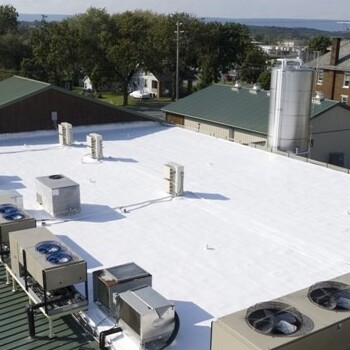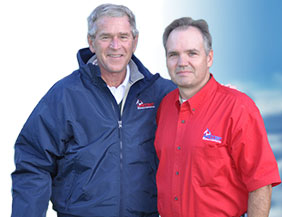
It can be expensive to construct a commercial structure, and the maintenance, the daily usage, and the overall upkeep can be costly too. From keeping the exterior groomed to keeping the interior comfortable and all components in proper working order. One of the key components that can affect every aspect of the structure includes the roofing.
Here in and around Dallas, Texas, choosing the right roofing material is crucial to a commercial structure. It must withstand various types of weather, including strong UV rays, hail storms, and rains, along with ice and snow. But it is the summer weather here that is the biggest focus, and cool roofing has proven to be an upgrade for most commercial structures.
What is cool roofing?
Conventional roofs with traditional roofing materials can reach a temperature of 150°F and higher on a summer day. Cool roofing reflects more of the UV rays from the sun instead of absorbing them like conventional roofing materials. This reaction keeps the interior of the building cooler and eases the strain on the HVAC system.
How does cool roofing work?
As we mentioned, the UV rays of the sun are reflected out into the atmosphere with cool roofing instead of being absorbed by the roofing. Two properties make this happen:
- Thermal emittance
- Solar reflectance
What types of materials are considered for cool roofing?
Five popular choices that provide commercial structures with cool roofing include:
- Foam Roofing: This cool roofing option is a foam-like material that comes from the combination of two liquid chemicals. It creates a flexible, lightweight, solid roofing layer that is cost-effective and reliable.
- Coated Roofing: Coating commercial roofs with cool roofing paint enhances durability and reduces bacterial growth. Coating for cool roofing can be installed on several types of existing roofing including asphalt, gravel, metal, and more.
- Single-Ply Roofing Membranes: This type of cool roofing comes in prefabricated sheets that are individually applied to the structure’s roof. They come in Ethylene Propylene Diene Monomer (EPDM), a single-ply type of roofing, and in thermoplastics, also single-ply.
- Built-Up Roofing: This cool roofing technique involves increasing the top layering over the mineral-surfaced sheets with reflective mineral granules. A cool roofing coating can be added over an existing BUR roof.
- Modified Bitumen Roofing: This type of roofing is designed with cool roofing in mind for commercial structures in the Dallas, Texas area. They can accommodate both cold and warm temperatures and are installed in one of 4 ways:
- Torch-applied
- Cold-applied
- Hot-mopped
- Self-adhesives
Is cool roofing on a commercial structure more expensive?
It can, depending on the style of the existing roof. Most commercial structures have a low-sloped roof, and the cost of installing cool roofing on a structure that needs a new roof there isn’t any additional cost.
If the commercial structure roofing is being retrofitted with cool roofing, the cost can depend on a few factors. Those factors start with the type of cool roofing material chosen and the size of the roof surface. The difference in the cost of cool roofing is approximately under $5.00 per square foot more than traditional roofing material which is typically darker in color.
Is cool roofing worth the higher cost?
Yes, once the difference in the energy cost is factored into, the initial cost is recovered within 6 years or less. There are other benefits from cool roofing for the structure as well as the surrounding environment as well such as:
- Energy bill reduction by up to 30%
- Interior has improved comfort, requiring less air conditioning
- Maintenance costs are reduced
- Roofing lifespan is extended
- The Urban Heat Island Effect is reduced
- Lessens the electricity demand at peak times
- Contribution to air pollution and global warming is lowered
An additional consideration of cool roofing is the climate. Cool roofing can achieve greater cool savings, but during the winter, the savings on heating the structure aren’t as great. This is because the UV rays are reflected and less heat is absorbed. Cool roofing isn’t a recommended material in areas that have harsh and longer winter weather.
What is the expected lifespan of cool roofing?
Traditional commercial roofing materials have an expected lifespan maximum of 20 years. This type of roofing often requires having the roof repaired and recoated to extend the lifespan. Cool roofing can extend that lifespan expectation by up to 30 years with proper installation and maintenance.
Can cool roofing handle foot traffic?
Many types of commercial roofing materials cannot withstand foot traffic. Excessive foot traffic usually leads to premature wear to the roof. However, cool roofing is designed to withstand the abrasion caused by foot traffic. When shopping different roofing contractors about installing cool roofing, it is important to advise the contractor on the amount of foot traffic.
Topping Off This Topic
If there is consideration of retrofitting the existing roof on a commercial structure or getting quotes for new roofing, it is important to get several quotes. Compare the various quotes for what is included and what type of guarantee and warranty are offered. Not all commercial roofing contractors provide identical services when it comes to commercial roofing.

